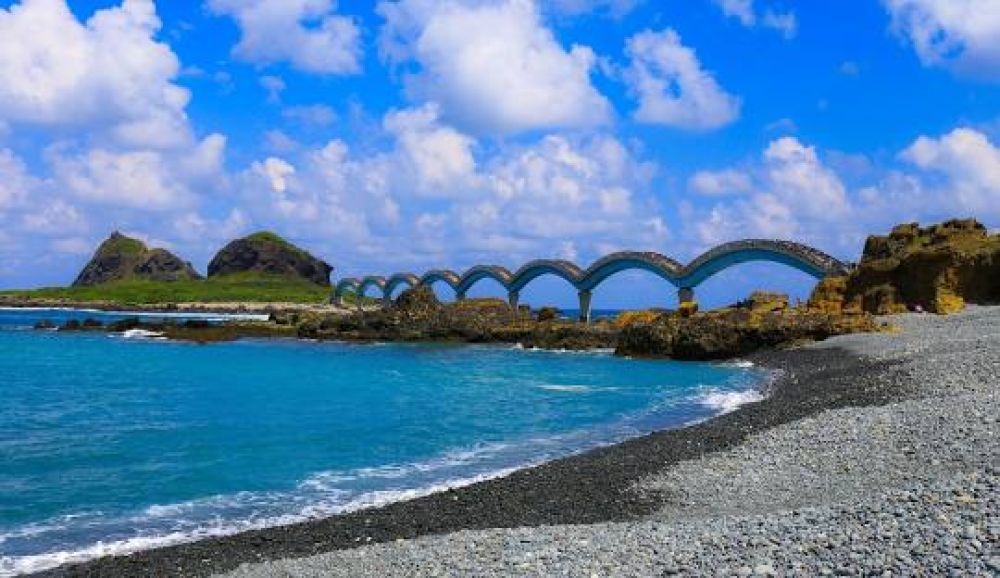

Nestled on the eastern coast of Taiwan, Sanxiantai is an area of significant natural beauty and cultural importance. Originally used by the area's indigenous peoples, the Amis tribe, as a seasonal fishing location, Sanxiantai didn't see much outside interest until the late 20th century. With the rise of domestic tourism in Taiwan, the exceptional geological features and the lore surrounding Sanxiantai began to draw in visitors from all over the island.
In the 1980s, the construction of the iconic eight-arch bridge that connects the mainland to the islet marked the beginning of Sanxiantai as a structured tourist destination. The bridge itself, completed in 1987, was designed in the style of a soaring dragon and rapidly became a symbol of the area, helping to cement Sanxiantai's status as a must-visit location in Taiwan's burgeoning tourist map.
The Taitung government has since promoted Sanxiantai by establishing the area as a Coastal Scenic Area and conserving its rich biodiversity. The commitment to preserving the environment has been paramount to the attraction's appeal, drawing eco-conscious travelers interested in Taiwan's natural and cultural heritage.
In recent years, Taiwan has seen a surge of international tourists seeking out its stunning landscapes and unique cultural experiences. Sanxiantai benefits from this uptrend, as social media and travel influencers have brought greater attention to its breathtaking views and folkloric background.
Currently, eco-tourism and sustainable travel practices are at the forefront of the travel industry in Taiwan, with Sanxiantai epitomizing these ideals. Tourists are encouraged to enjoy the natural beauty while adhering to conservation regulations that protect the local fauna and marine life.
Another trend that has seen a rise is the combination of cultural tourism with health and wellness. Sanxiantai, with its coastal hikes and the tranquil setting, offers a scenic spot where visitors can partake in healthful activities such as walking, bird watching, and experiencing local indigenous culture.
The popularity of photography tourism has also surged, with many visitors arriving at dawn or dusk to capture the spectacular colors and shadows cast by the sunrise or sunset on the waves crashing against the unique rock formations. The picturesque landscape of Sanxiantai is indeed a photographer's paradise.
Sanxiantai's tourism continues to be driven by domestic travelers, especially in the wake of global events that restrict international travel. Its remote location and outdoor recreational activities make it an attractive destination for those looking to escape the city and enjoy Taiwan's eastern coastline's serenity.
If you're planning a visit to Sanxiantai, be sure to walk the iconic Dragon Bridge, explore the variety of unique flora and rock formations, and immerse yourself in the myth of the Three Immortals, for whom the islet is named. With its combination of stunning scenery and enriching cultural narratives, Sanxiantai not only offers a feast for the senses but also a glimpse into the heart of Taiwanese tradition.
Responsible tourism is emphasized, and visitors are encouraged to respect the environment and follow local guidelines to help maintain the pristine condition of this unique location.